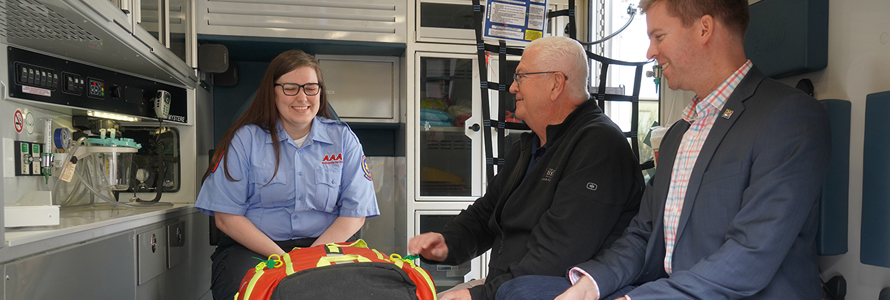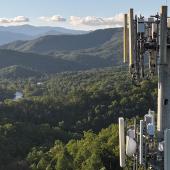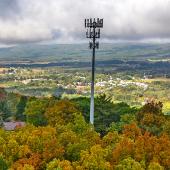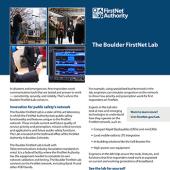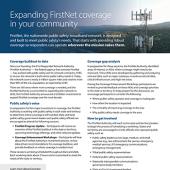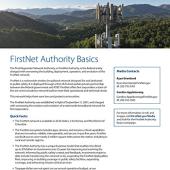This blog report is a repost from JEMS, originally published on June 13, 2019. The original article can be accessed here
Over the last 50 years, major U.S. industries—aerospace, automobile, energy, consumer electronics and more—have implemented significant technological changes to adapt to the shifting and growing demands of consumers. Just as these industries have evolved with the digital age, so too is the emergency communications industry, which is undergoing a major transformation with the arrival of FirstNet—the only nationwide wireless broadband network dedicated to first responders.
Yesterday, Today and Tomorrow
I first became involved in the efforts of FirstNet as a representative of and advocate for the communications needs of the National Association of State EMS Officials. Together with other public safety associations, we took our cause to Congress.
When legislation passed to create the First Responder Network Authority (i.e., FirstNet Authority) and give it the responsibility of establishing a nationwide public safety broadband network, I didn’t imagine the network would be so far down the road we’ve been down already in such a short amount of time. Thanks to a public-private partnership between the FirstNet Authority and AT&T, FirstNet is now a reality—an expanding nationwide network for EMS and all of public safety.
Just over one year into FirstNet’s five-year buildout, the network has seen an increase in LTE coverage by more than 50,000 square miles. As of May, there are more than 7,250 public safety agencies using 600,000 device connections on FirstNet, and adoption is growing every day. First responders across the country are beginning to take advantage of the network’s unique capabilities, including improved interoperability, expanded connectivity, and always-on priority and preemption that ensures a reliable network even during times of heavy use. [Native Advertisement]
Now, in my capacity as a recently appointed member to the FirstNet Authority Board, I’m charged with ensuring that FirstNet continues to meet growing and changing emergency communications needs. For me, what truly makes this network unique from commercial networks available today is the underlying commitment of ensuring that the network includes public safety’s perspective.
That means the FirstNet Authority, along with its network partner AT&T, are taking steps to proactively work with the public safety community and incorporate feedback into the network’s design and capabilities.
A Catalyst for Public Safety Innovation
One of the FirstNet Authority’s most recent initiatives to engage public safety is underway at its Technology Headquarters in Boulder, Colorado. In conjunction with the FirstNet Innovation and Test Lab, the FirstNet Authority is developing an experience program. The program will include a center where first responders can have hands-on experiences to gain a better understanding of how public safety broadband can best benefit their agencies’ operations. The experience program will enhance the FirstNet Authority’s public safety engagement efforts with a focus on gathering feedback on emergency communications needs now and in the future.
For example, the program will include a focus on rural emergency response—an area identified by public safety as a priority. Through a collaborative effort with the University of Mississippi Medical Center, the FirstNet Authority will develop experiences based on lessons learned and best practices related to public safety’s mobile broadband use in rural areas. In turn, this information will help advance public safety broadband capabilities for emergency services in rural communities and ultimately support the advancement of telemedicine and other mobile technologies. The goal of this collaboration and the overall experience program is to drive innovations forward and help practitioners learn how to best operationalize cutting-edge technologies.
Maximizing the FirstNet Experience
The FirstNet Authority is also continuing its public safety outreach efforts in the field as it works to develop a roadmap to enhance the FirstNet network. The FirstNet Authority Roadmap will be driven by the communications needs of the public safety community and reflect industry trends.
Over the past several months, the FirstNet Authority’s Public Safety Advocacy team has crisscrossed the country to host and attend a variety of meetings with public safety to gather feedback for the Roadmap.
In April, while attending the Joint SAFECOM and National Council of Statewide Interoperability Coordinators meeting in Pittsburgh, I had the opportunity to update attendees about the latest FirstNet developments and capabilities, as well as to learn more from government and industry leaders about their network operational needs. From these and other future engagements, the roadmap will continually be updated to reflect the most accurate accounts of public safety’s operational needs and industry trends.
The roadmap will guide the FirstNet Authority’s programs and investments over the next several years and beyond. It will help foster a network that grows and adapts as the needs of first responders change.
Engaging with the FirstNet Authority is an opportunity to share your communications needs to help ensure FirstNet has the greatest impact and can best help you with your lifesaving mission. There are a number of ways to participate with the FirstNet Authority, including through your representatives from the national EMS associations on the Public Safety Advisory Committee established by FirstNet or by contacting a FirstNet Authority Public Safety Advisor for your state.
For many of us working in EMS or other public safety disciplines, we have experienced the promise of technology over the last 20-plus years. Now, public safety broadband technology is on the verge of revolutionizing the way we care for our patients—whether it’s telemedicine bringing the capabilities of hospital care directly to an emergency response vehicle, into a patient’s home, or across vast rural areas, or having the ability to access electronic patient records via the patient care report database. These technologies offer the promise of improving patient care, decreasing medical expenses, and increasing access to medical care.
FirstNet can help drive these innovations forward and equip EMS practitioners and emergency care providers across the nation with new tools to help them save lives. I’m looking forward to the future with FirstNet and continuing to engage with my EMS colleagues as we drive public safety communications forward.
.


